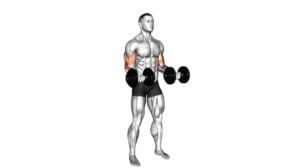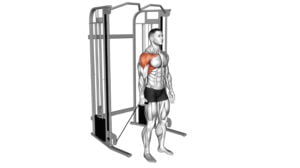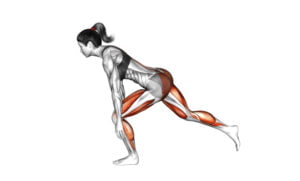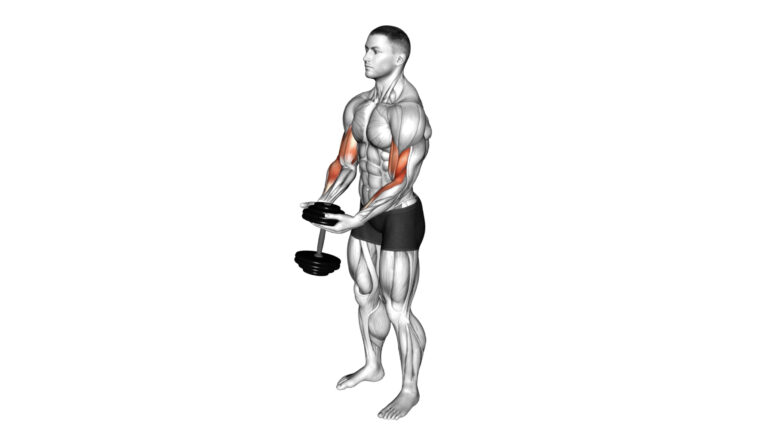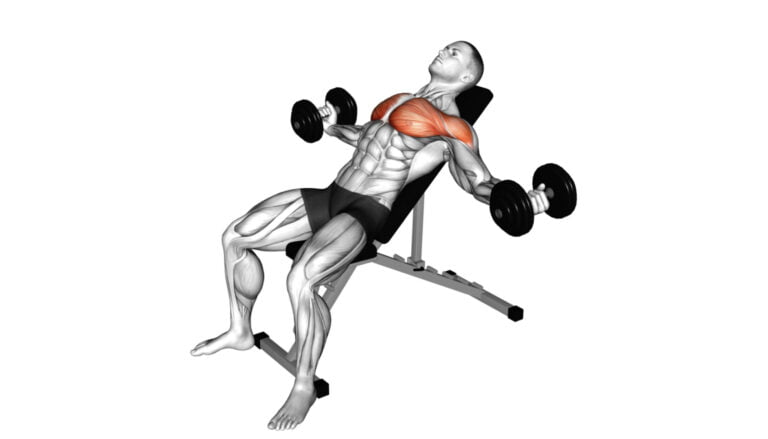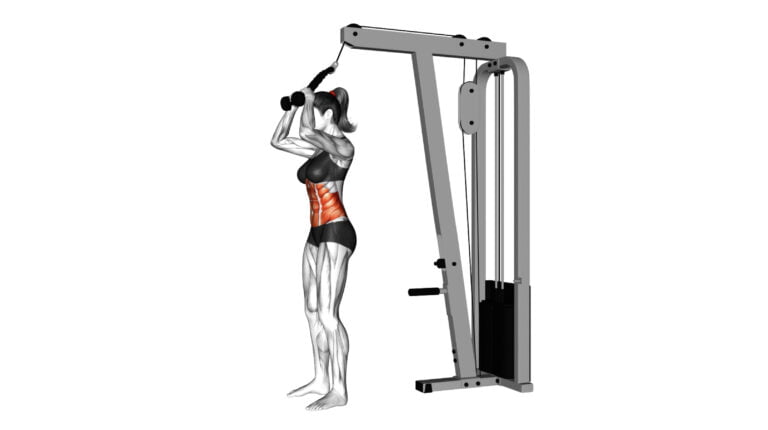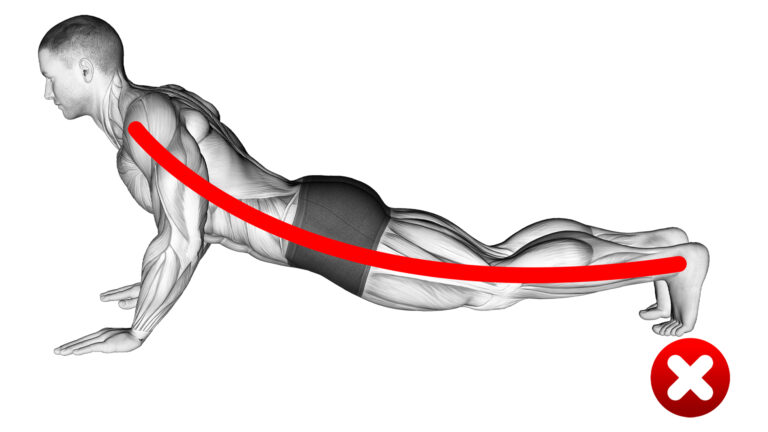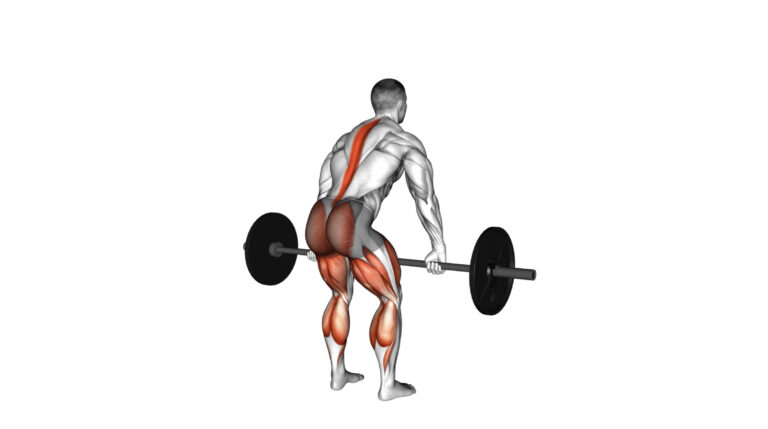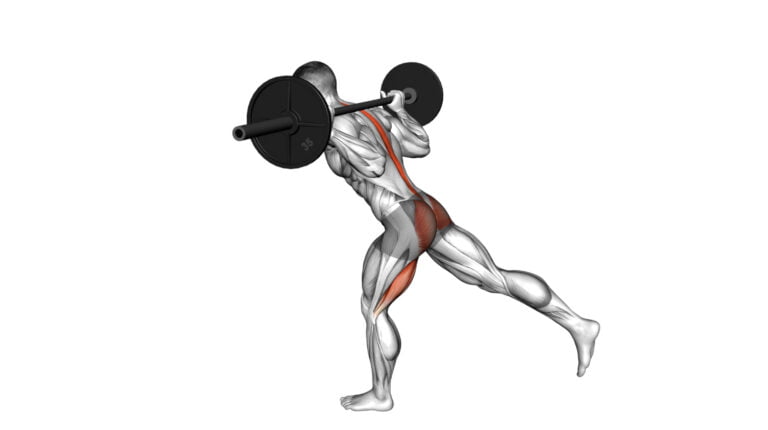10 Long Bicep Head Exercises For Massive Peaks: A Complete Guide
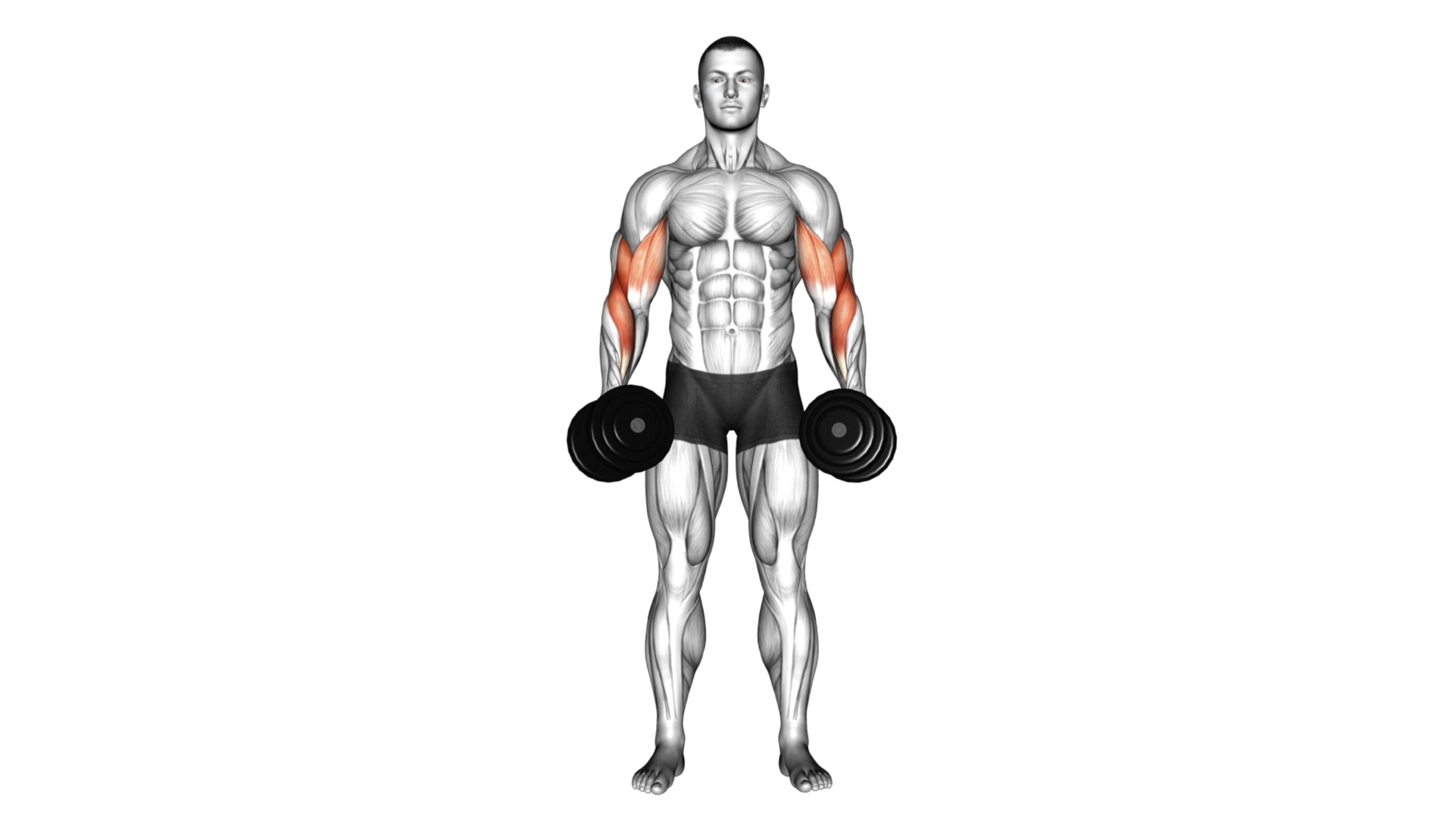
Building impressive bicep peaks is an aspiration for many fitness enthusiasts eager to sculpt their upper arms into powerful symbols of strength. Far from being purely a vanity goal, achieving well-defined muscles requires knowledge and precision in your training regimen.
With a background as a certified personal trainer and years spent refining weightlifting techniques, I’m here to share the blueprint for specifically targeting the often-neglected long head of the biceps brachii.
Understanding how to isolate and work out this particular muscle group can be game-changing in developing that coveted arm definition. Long bicep head exercises don’t just contribute aesthetically; they enhance functional strength that serves you beyond the gym walls.
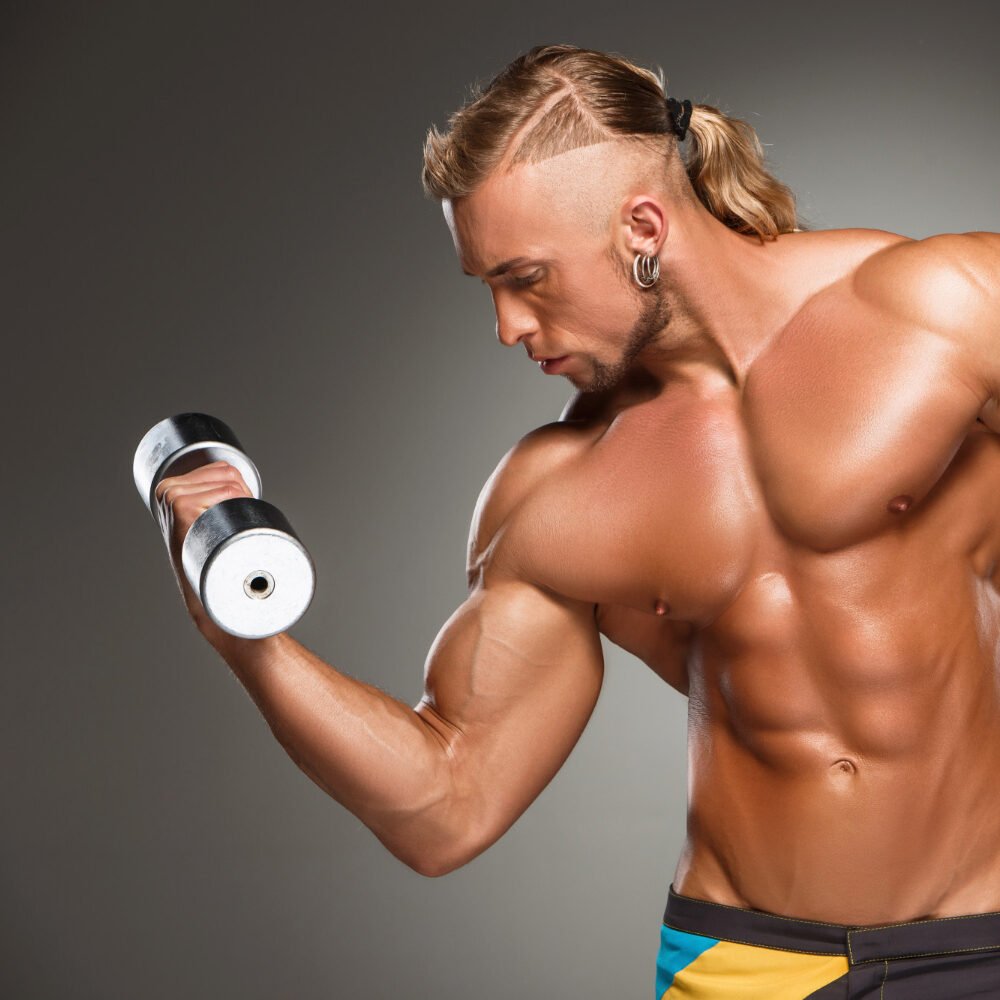
This article delves deep into exercises designed for peak performance, ensuring your efforts translate into visible results. Ready? Let’s unleash those gains!
Key Takeaways
- Targeting the long head of the bicep is key for achieving those impressive arm peaks and enhancing your overall arm size and definition.
- Exercises like band close – grip curls, dumbbell cross body hammer curls, barbell preacher curls, among others are specifically designed to focus on this muscle area.
- Maintaining proper form during workouts will prevent injury and ensure that you’re effectively engaging the long head of your biceps.
- It’s important not to overtrain: rest days and recovery are crucial for muscle growth and avoiding fatigue or injury.
- Using a weight that allows for full control throughout each exercise maximizes engagement and growth of the long head bicep muscles.
Understanding the Long Head Bicep Muscle
The long head of the bicep muscle is one of the two main heads that make up the biceps brachii. It runs along the outer part of the upper arm and plays a crucial role in elbow flexion and shoulder stability, making it essential to target for overall arm development and strength.
Differentiating between the two bicep muscle heads
Your biceps consist of two muscle heads: the long head and the short head. The long head, located on the outside portion of your arm, is what gives your bicep that sought-after peak when flexed.
It runs over the shoulder joint and down to join the short head at your elbow. Targeting this part of your bicep can add definition and size, making those sleeves fit tighter.
Exercises that involve shoulder movement or keep your arms behind the plane of your body will emphasize the long head more effectively. Consider incorporating moves like incline dumbbell curls into workouts for optimal growth in this area.
Focus on full range of motion; from fully extended elbows to shoulders slightly back as you curl up, it’s key for hitting all parts of these muscles. Embrace each contraction with intention, understanding how every angle targets different aspects of both heads for balanced muscular development.
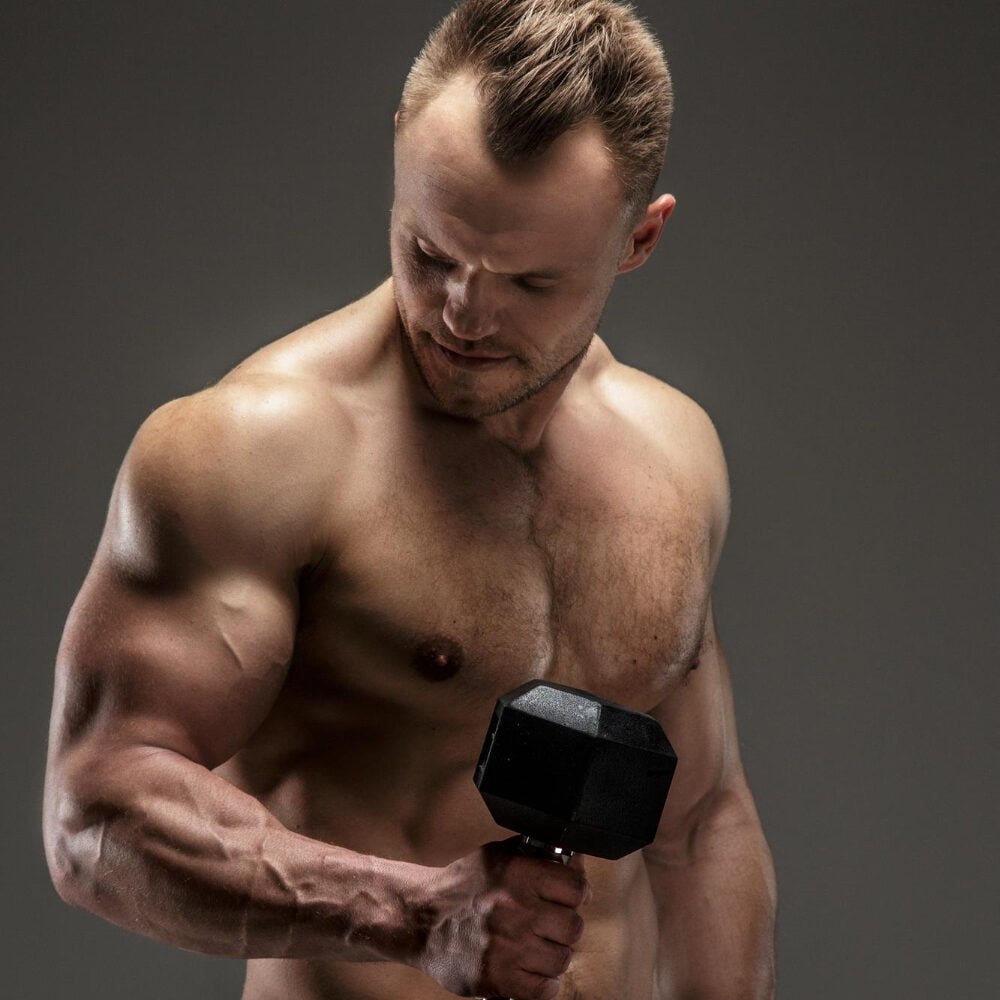
Importance of targeting the long head bicep
Exercising the long head of the bicep is crucial for building that coveted peak which makes your arms look bigger and more defined. This part of the muscle, nestled on the outer portion of your arm, adds to the overall aesthetic by creating a distinct separation between biceps and triceps.
Focusing on this area leads to improved muscle symmetry and can enhance your ability to perform compound exercises like pull-ups or chin-ups with better form.
Developing a stronger long head also helps stabilize the shoulder joint, ensuring safer workouts across various movements. Targetting it specifically through exercises like incline bench curls or preacher curls calls into play not just hypertrophy but functional gains too.
By isolating it during certain lifts, you can prevent imbalances that might occur if only generic bicep curls are performed. Regular training aimed at this region supports injury prevention and could contribute significantly towards upper body strength goals.
Top 10 Long Bicep Head Exercises for Massive Peaks
Achieve massive bicep peaks with these top 10 long bicep head exercises, including band close-grip curls, dumbbell cross body hammer curls, and barbell preacher curls. Each exercise is designed to target the long head of the bicep for maximum muscle growth and development.
1. Band Close-Grip Biceps Curl
For an exercise that targets the long head of your biceps for that peak, give band close-grip biceps curls a try. You’ll need a resistance band and some space to stand. Grab the band with both hands close together and step on it to anchor it under your feet.
Make sure your palms face forward in a supinated grip, which activates the long head muscle more effectively during each curl.
Curl the band upward by bending your elbows while keeping them pinned at your sides. Feel the tension build in the muscles as you move; this is key for growth and strength. Unlike barbells or dumbbells, bands provide continuous resistance throughout the entire motion, challenging those bicep peaks even more intensely as you lift and lower with control.
Remember to maintain good form—no swinging or cheating! With consistent practice, these curls will help sculpt stronger, more pronounced arms ready for any challenge or sleeve-busting shirt.
2. Dumbbell Close-Grip Curl
Transitioning from the Band Close-Grip Biceps Curl, the Dumbbell Close-Grip Curl puts emphasis on the long head of the bicep. By holding dumbbells with a closer grip, you effectively target and isolate the muscle, promoting greater hypertrophy and strength.
This exercise also engages the brachialis and forearms, contributing to overall arm development. Begin by sitting on a bench with your feet flat on the floor and your back straight, then curl both dumbbells toward your shoulders while keeping your elbows close to your body.
This isolation exercise is beneficial for individuals looking to add mass to their long head bicep muscles while improving grip strength and stability in the elbow joint.
3. Dumbbell Cross Body Hammer Curl
The dumbbell cross body hammer curl targets the long head of the bicep, allowing for a peak contraction. Start in a standing position with a dumbbell in each hand by your sides, palms facing inward.
Without moving your upper arms, curl the weights diagonally across your body towards the opposite shoulder, keeping your palms facing each other throughout the movement. Lower back down slowly and repeat for recommended reps.
Engaging multiple muscle fibers within the long head of biceps, this exercise helps to enhance arm strength and size. By isolating this area effectively, you can achieve more defined peaks while also improving overall arm aesthetics and strength.
4. Dumbbell Incline Alternate Bicep Curl
Transitioning from the Cross Body Hammer Curl, the Dumbbell Incline Alternate Bicep Curl is an effective exercise for targeting the long head of the biceps. This exercise provides a great stretch at the bottom of each rep, allowing for maximum muscle engagement and development.
By alternating arms, it helps to prevent muscle imbalances while promoting overall bicep strength and growth.
Executing this exercise on an incline bench also puts less strain on your lower back and reduces the likelihood of using momentum to lift heavier weights than you can handle effectively.
5. Barbell Drag Curl
Transitioning from the Dumbbell Incline Alternate Bicep Curl, the Barbell Drag Curl is a dynamic exercise that specifically targets the long head of the biceps. To perform this movement, stand with your feet shoulder-width apart and hold a barbell in front of your thighs with an underhand grip.
Keeping your elbows close to your body, lift the bar by dragging it up along your torso until it reaches chest level. Lower the bar with controlled resistance to complete one repetition.
This exercise effectively isolates and engages the biceps, promoting muscle growth and strength development. Its emphasis on maintaining tension throughout the movement enhances muscle activation for maximum results.
6. Barbell Preacher Curl
Transitioning from the Barbell Drag Curl, the Barbell Preacher Curl is an effective isolation exercise that targets the long head of the biceps. By using a preacher bench, this exercise emphasizes proper form and prevents cheating by isolating the biceps and eliminating momentum.
When performing the Barbell Preacher Curl, ensure your arms are fully extended at the bottom of each repetition to maximize stretch on the long head of your bicep. Keep your movements controlled throughout, focusing on squeezing your biceps at the top of each rep for optimal results.
7. EZ Barbell Curl
The EZ barbell curl is a variation of the traditional barbell curl, utilizing an EZ-curl bar that features a unique angled design. This exercise targets the long head of the bicep while reducing strain on the wrists and forearms compared to a straight bar.
To perform an EZ barbell curl, stand with feet shoulder-width apart, grasp the inner handles with supinated grip, maintain elbows close to your sides, and slowly lift the weight towards your shoulders using controlled movements.
Incorporating this exercise into your routine can help build mass in the long head of the bicep while minimizing discomfort in the wrists and forearms.
8. Cable Curl
Perform cable curls by attaching a straight or EZ bar to the low pulley of a cable machine. Stand facing the weight stack with your feet shoulder-width apart, and grasp the bar with an underhand grip.
Keep your elbows close to your torso as you curl the bar towards your shoulders, squeezing your biceps at the top of the movement. Lower the bar in a controlled manner to complete one repetition.
To engage your long head bicep effectively during cable curls, maintain strict form throughout each repetition. Avoid using momentum or swinging movements by stabilizing your upper body and focusing on contracting the biceps while lifting and lowering the weight.
9. Cable Neutral Grip Biceps Curl
The cable neutral grip biceps curl targets the brachialis and brachioradialis muscles, adding mass to your upper arms. Stand with your feet shoulder-width apart and grasp two parallel handles attached to a low-pulley cable machine.
Keeping your elbows close to your sides, exhale as you flex at the elbow, lifting the handles towards your shoulders. Then, inhale as you slowly lower the handles back down to starting position.
This exercise provides constant tension on the biceps throughout each repetition, leading to enhanced muscle activation for greater growth potential in the long head of the biceps.
Add this move into your arm workout routine for a well-rounded approach that maximizes bicep development and power in other upper body movements like pulling exercises.
10. Kettlebell Concentration Curl
To perform the kettlebell concentration curl, sit on a bench and hold a kettlebell in one hand. Place your elbow against the inside of your thigh and fully extend your arm. Curl the kettlebell toward your shoulder while keeping your upper arm still.
Slowly lower it back down to complete one rep.
This exercise effectively isolates the bicep muscle, helping to build strength and size in that area. It also improves forearm strength and grip due to the nature of holding the kettlebell during the movement.
Common Mistakes to Avoid
Improper form, overtraining, and lifting too heavy are common mistakes to avoid when performing long bicep head exercises. To learn more about how to prevent these errors and maximize your bicep gains, keep reading!
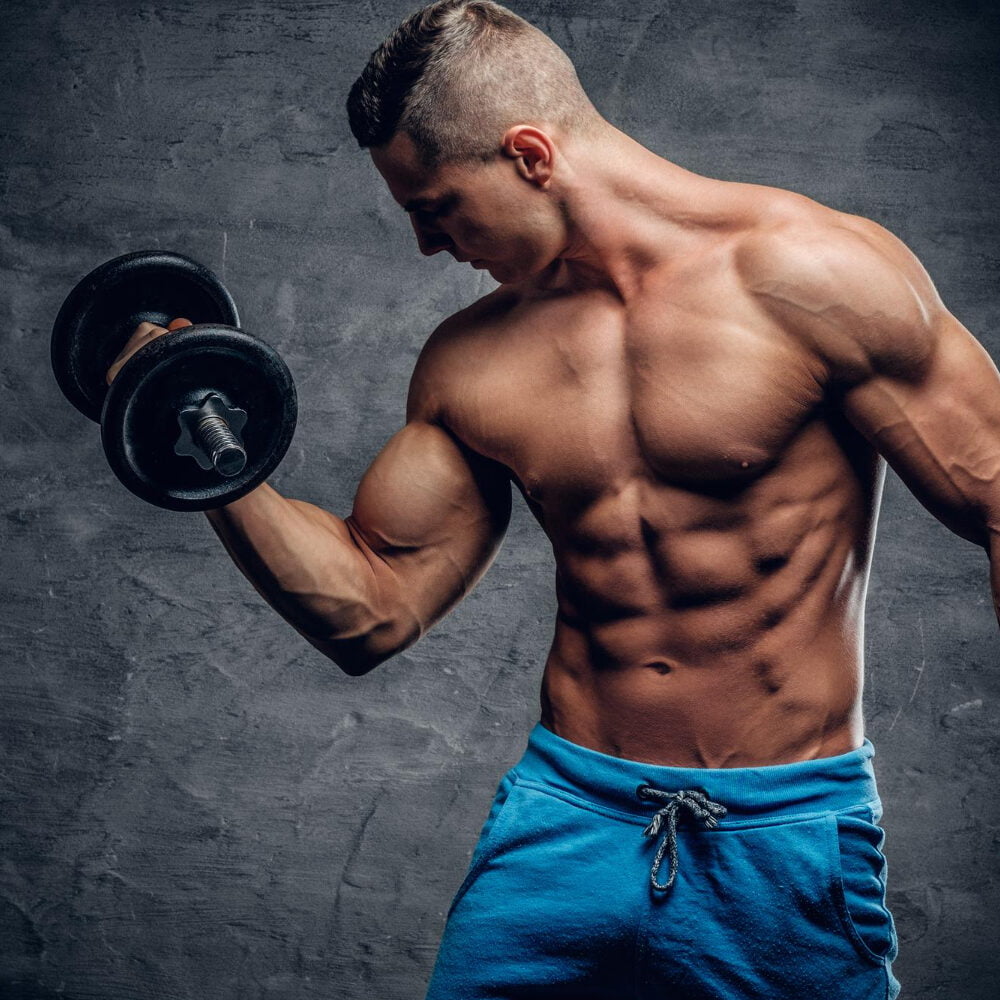
Improper form
Improper form during bicep exercises can lead to ineffective muscle targeting and potential injury. For instance, using momentum or swinging the weight rather than controlling it with the bicep muscles limits the exercise’s effectiveness.
Additionally, not maintaining proper posture, such as hunching over or arching the back, puts undue strain on other body parts and reduces the exercise’s benefit.
Furthermore, letting elbows drift forward or outward during curls shifts the focus away from the long head of the biceps. It is important to maintain strict form throughout each repetition to ensure maximum engagement of the targeted muscle and reduce the risk of strain or injury in surrounding areas.
Overtraining
Overtraining can lead to decreased performance, increased risk of injury, and a plateau in muscle growth. It occurs when the body doesn’t have adequate time to rest and recover between workouts.
Common symptoms of overtraining include persistent fatigue, irritability, insomnia, and a weakened immune system. To avoid overtraining, it’s essential to prioritize rest days and allow your muscles ample time for recovery before training them again.
Varying the intensity and duration of your workouts can also help prevent overtraining by giving different muscle groups the chance to recover while others are being trained.
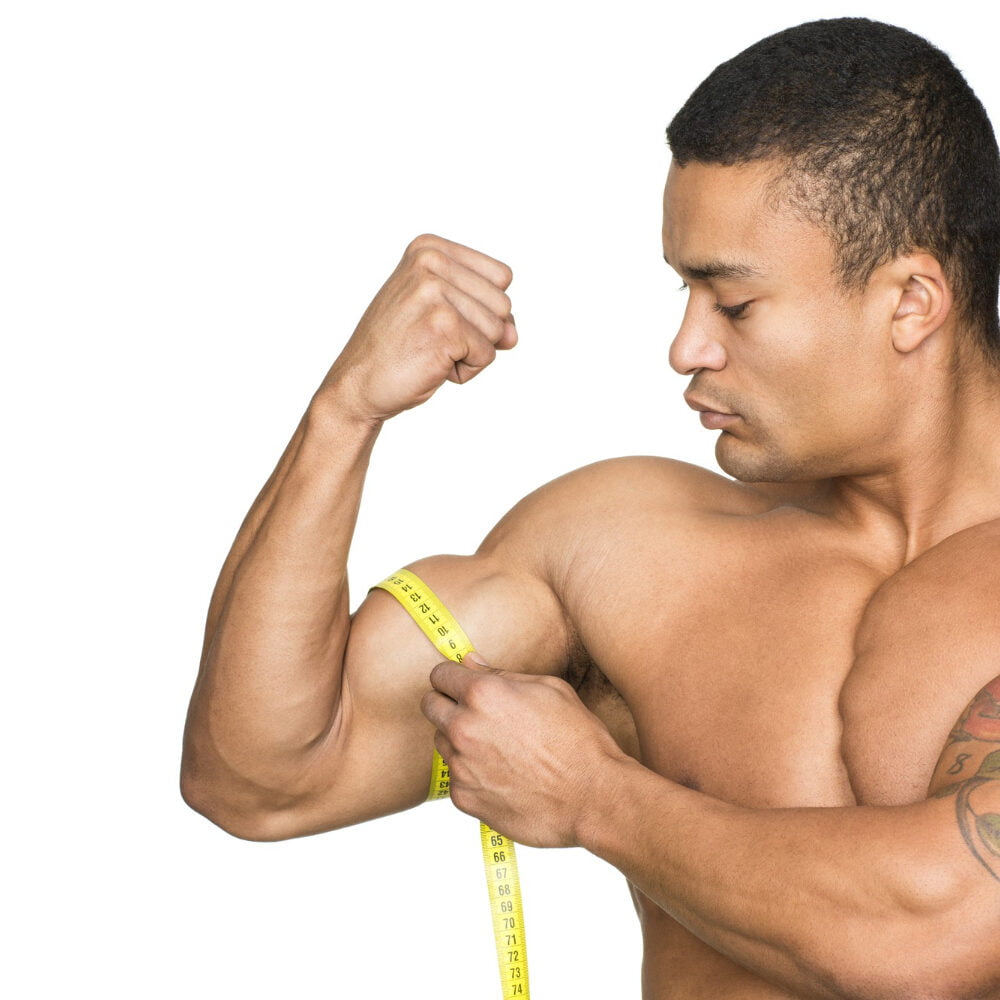
Lifting too heavy
Lifting too heavy can lead to compromised form and increased risk of injury. It’s important to choose a weight that allows you to perform each exercise with proper technique, ensuring maximum muscle engagement while minimizing strain on joints and tendons.
Pushing beyond your capabilities may hinder progress rather than accelerate it. Always prioritize control and precision over sheer weight when targeting the long head bicep for optimal growth and development.
Remember, lifting heavier weights doesn’t always equate to better results. By focusing on controlled movements with moderate resistance, you can effectively target and stimulate the long head biceps, leading to more substantial gains over time without risking injury or setback.
Tips for getting the most out of each exercise
To maximize the benefits of these long bicep head exercises, focus on maintaining proper form and technique throughout each movement. Pay attention to your grip and hand position, and don’t rush through the exercises.
Additionally, ensure you are using an appropriate weight for your fitness level to avoid injury and see optimal results.
Common Mistakes
Improper form is a common mistake that can lead to bicep strains and injuries. It’s important to maintain proper posture and control throughout each exercise to prevent putting unnecessary strain on the biceps tendon.
Overtraining is another pitfall to avoid as it can lead to exhaustion and hinder muscle recovery, ultimately impeding progress. Lifting too heavy is also a common mistake that can compromise form and increase the risk of injury – prioritizing proper technique over lifting heavier weights is crucial for long-term gains without setbacks.
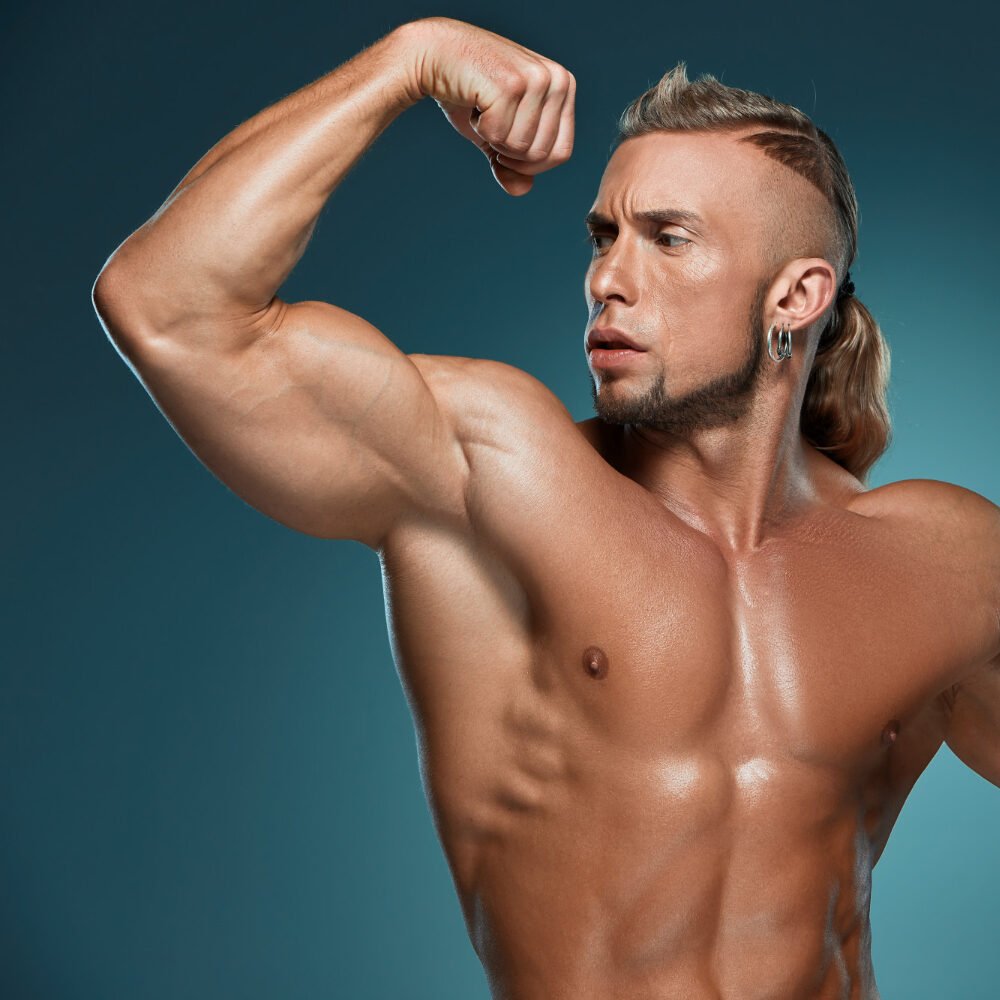
Recommended Sets And Reps
To get the most out of these exercises, it’s important to focus on the recommended sets and reps. Here’s a detailed breakdown:
- Band Close-Grip Biceps Curl: Perform 3-4 sets of 8-12 reps with a moderate weight to target the long head bicep effectively.
- Dumbbell Close-Grip Curl: Aim for 3 sets of 10-15 reps, ensuring a full range of motion for optimal muscle engagement.
- Dumbbell Cross Body Hammer Curl: Execute 4 sets of 8-10 reps per arm, emphasizing controlled movements to enhance peak development.
- Dumbbell Incline Alternate Bicep Curl: Complete 3 sets of 12-15 reps on each arm, focusing on the stretch and contraction during each repetition.
- Barbell Drag Curl: Engage in 4 sets of 6-8 reps with a challenging weight, prioritizing proper form and technique.
- Barbell Preacher Curl: Perform 3 sets of 8-10 reps with a moderate weight to isolate and exhaust the long head bicep muscle fibers.
- EZ Barbell Curl: Execute 4 sets of 8-12 reps using an EZ bar for varied grip positions and overall bicep stimulation.
- Cable Curl: Aim for 3 sets of 12-15 reps per arm, utilizing different cable attachments to target the long head bicep from multiple angles.
- Cable Neutral Grip Biceps Curl: Complete 4 sets of 10-12 reps, maintaining consistent tension throughout the exercise for optimal muscle growth.
- Kettlebell Concentration Curl: Perform 3 sets of 10-12 reps per arm in a controlled manner to fully engage the long head bicep while minimizing momentum.
Conclusion
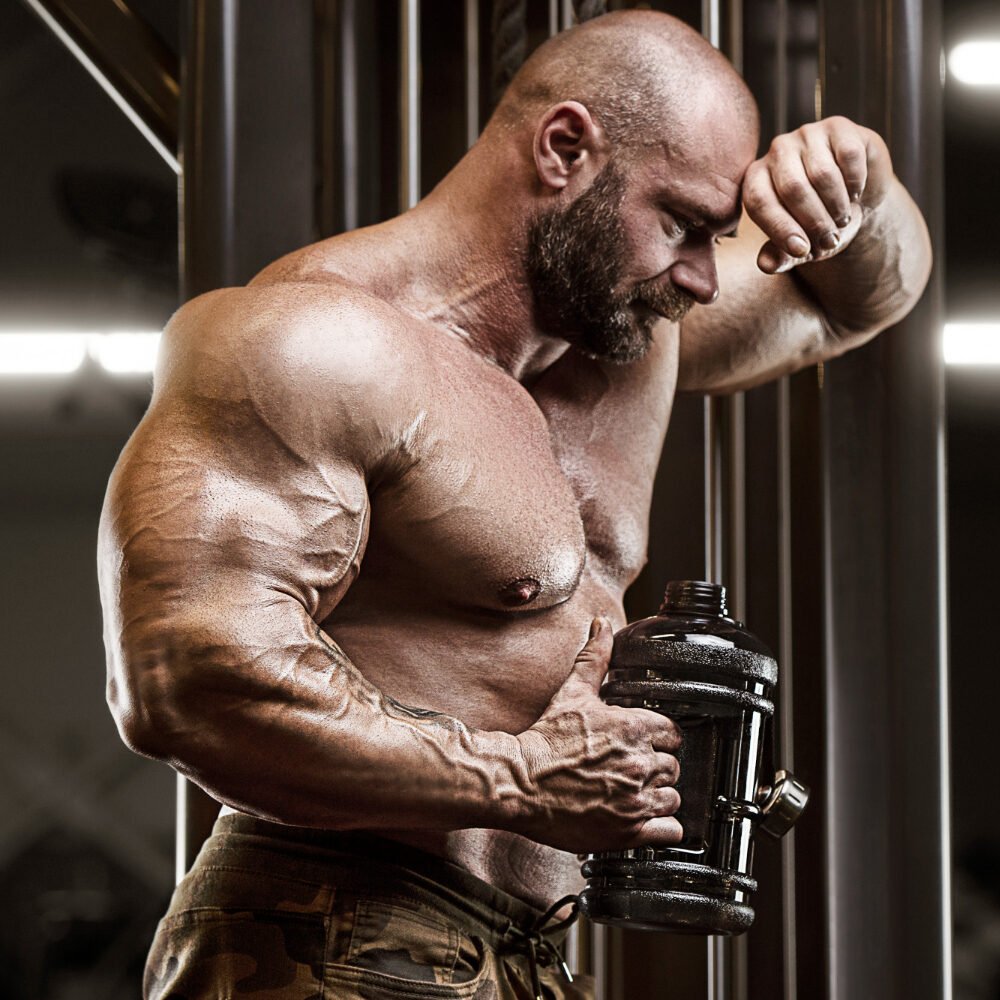
In conclusion, these 10 long bicep head exercises provide practical and efficient strategies for building massive peaks. By targeting the long head bicep through these exercises, significant improvements in strength and muscle growth can be achieved.
The importance of proper form and recommended sets and reps cannot be overstated when aiming for optimal results. For further guidance, individuals can explore additional resources to enhance their understanding and progress in this area.
Remember, consistent effort in performing these exercises will lead to remarkable gains in bicep development.
FAQs
1. What are long bicep head exercises?
Long bicep head exercises target the biceps brachii, focusing on building strength and muscle for impressive peaks through a variety of movements like barbell curls and dumbbell curls.
2. How do pull-ups help in building bicep mass?
Pull-ups engage your arms’ flexor muscles, including the long head of the biceps, especially when performed with a chin-up bar using a supinated grip to encourage peak contraction.
3. Are there specific exercises for targeting my biceps peak?
Yes! Concentration curls emphasize the tension on your bicep peaks by isolating each arm and curling free weights or dumbells with focused form; while preacher curls ensure that you’re hitting the right spot due to their angle providing constant tension during lifts.
4. Can I add resistance to my workout for bigger biceps?
Incorporating resistance like kettlebells or adding more weight to your free-weight routines significantly enhances muscle-building potential—exercises such as incline bench press and close-grip barbell bench press utilize these methods effectively for arm growth.
5. Should I pay attention to my elbow position during workouts?
Absolutely! Maintaining proper scapula stabilization combined with elbow positioning can influence how much focus is placed on the long head of your biceps during exercise—to maximize effectiveness, be aware of abduction and internal rotation throughout each movement.
6. What role does nutrition play in developing muscular arms?
Sports nutrition plays an integral role in muscle development; consuming adequate protein shakes supports recovery and repair after intense sessions focusing on strength training bodybuilding techniques necessary for massive arm gains.

Author
Years ago, the spark of my life’s passion ignited in my mind the moment I stepped into the local gym for the first time. The inaugural bead of perspiration, the initial endeavor, the very first surge of endorphins, and a sense of pride that washed over me post-workout marked the beginning of my deep-seated interest in strength sports, fitness, and sports nutrition. This very curiosity blossomed rapidly into a profound fascination, propelling me to earn a Master’s degree in Physical Education from the Academy of Physical Education in Krakow, followed by a Sports Manager diploma from the Jagiellonian University. My journey of growth led me to gain more specialized qualifications, such as being a certified personal trainer with a focus on sports dietetics, a lifeguard, and an instructor for wellness and corrective gymnastics. Theoretical knowledge paired seamlessly with practical experience, reinforcing my belief that the transformation of individuals under my guidance was also a reflection of my personal growth. This belief holds true even today. Each day, I strive to push the boundaries and explore new realms. These realms gently elevate me to greater heights. The unique combination of passion for my field and the continuous quest for growth fuels my drive to break new ground.





